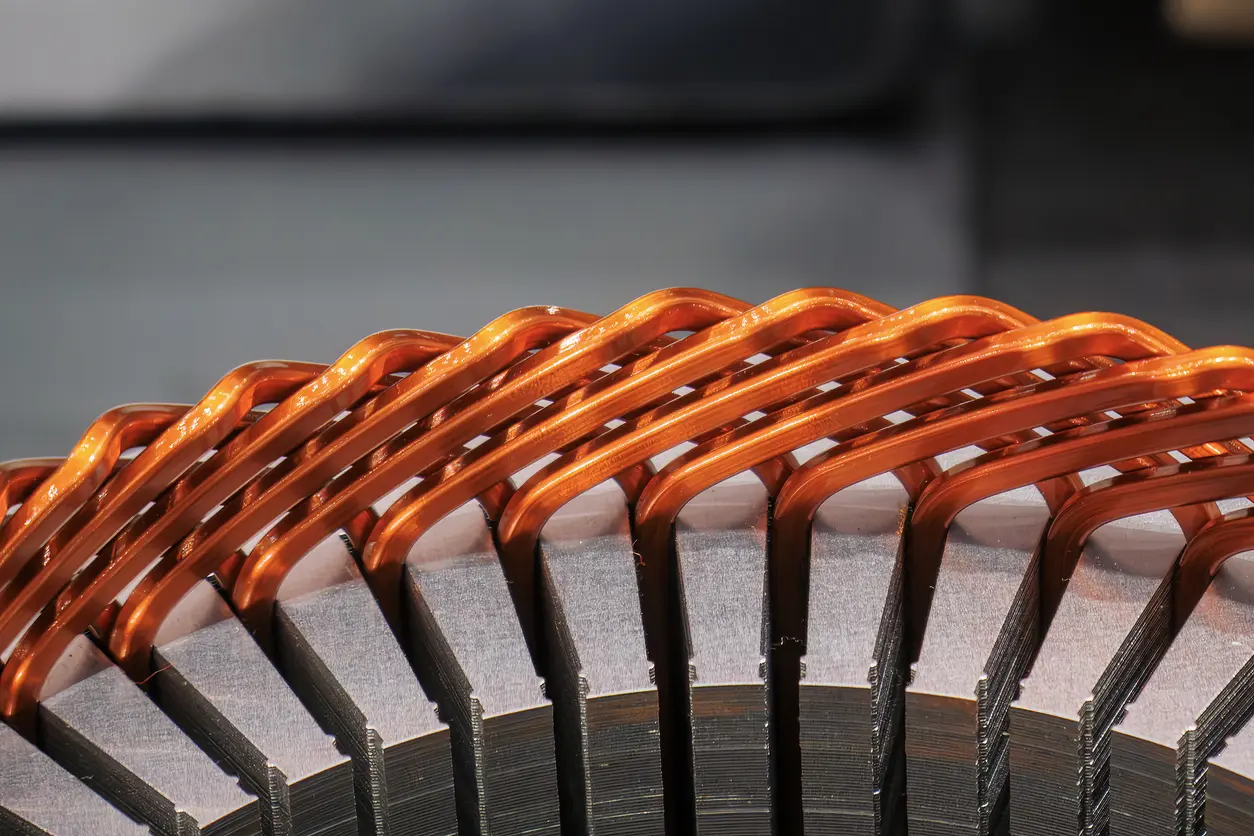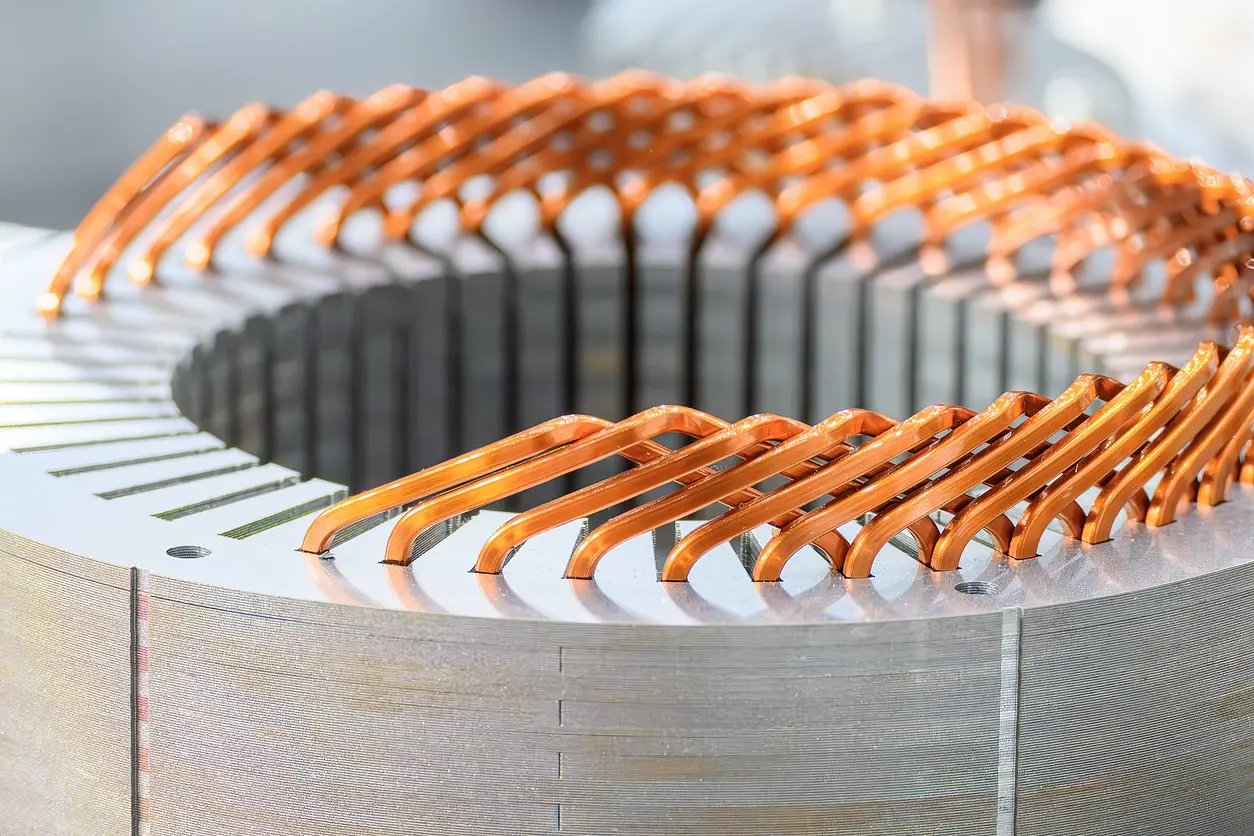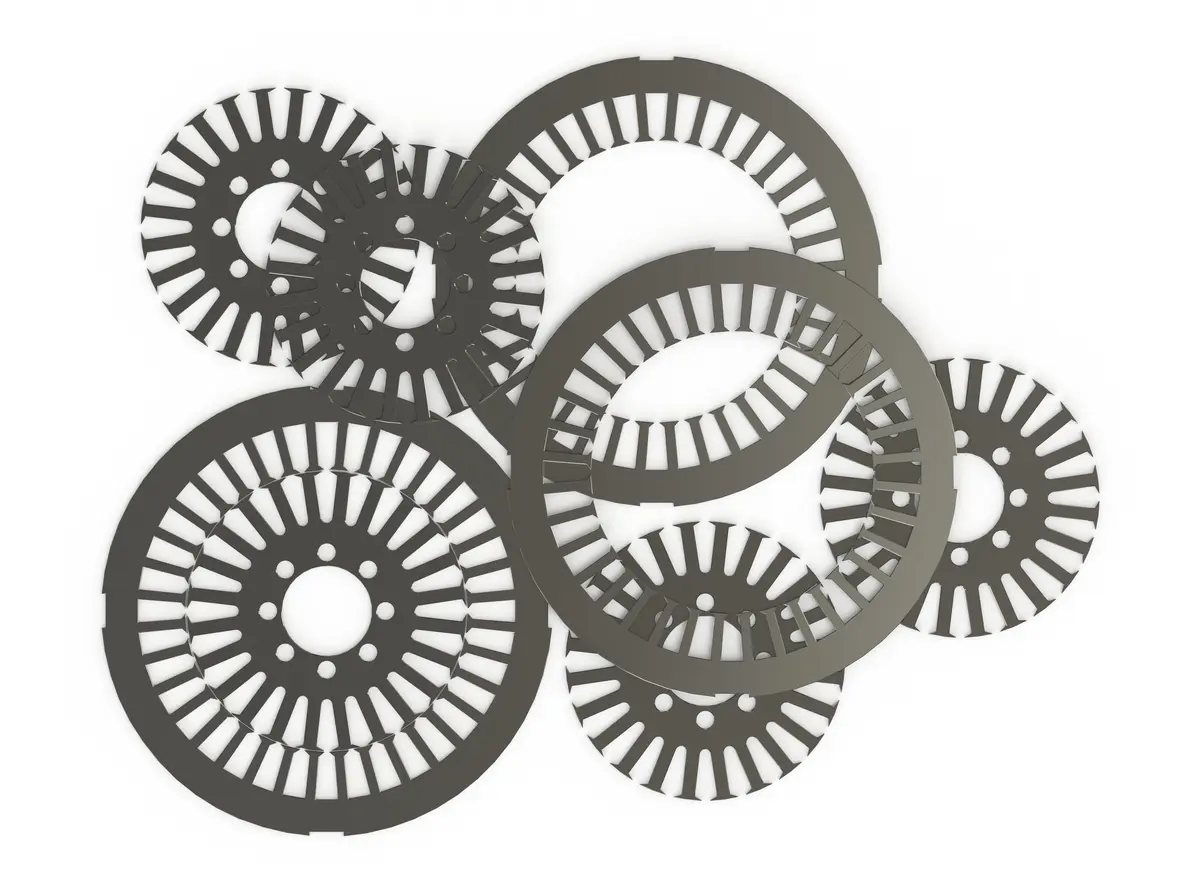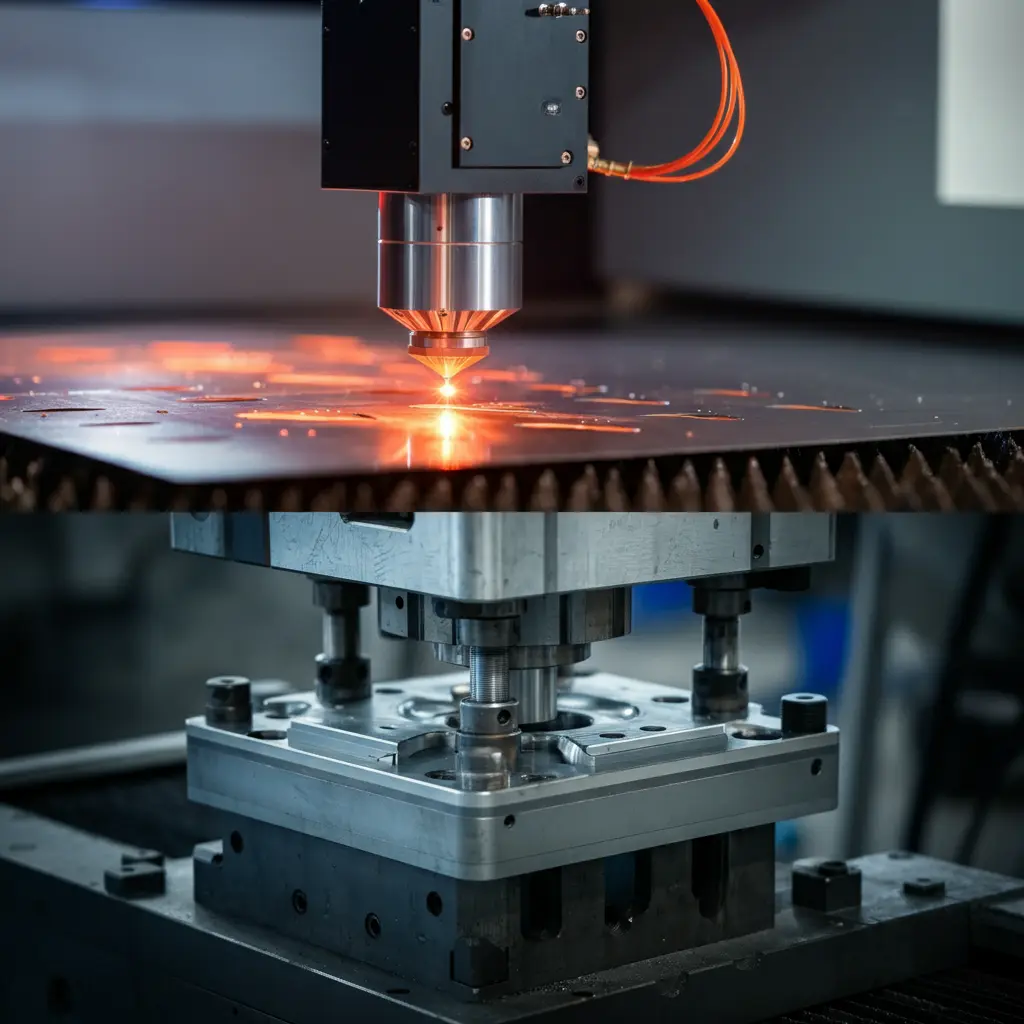Discover how a High Efficiency Motor Core maximizes electromagnetic efficiency, minimizes iron loss, and extends an electric motor’s service life. Learn about material selection, precision manufacturing, and advanced lamination techniques crucial for modern motor applications.
1. Introduction
Electric motors serve as the core power source in modern electromechanical equipment. Their performance directly affects the overall operational efficiency and energy consumption of the system. Among the many critical factors influencing motor performance, a high-performance Motor Core undoubtedly plays a pivotal role. The Motor Core, composed of laminated electrical steel, guides and enhances the magnetic field, thereby improving the electromagnetic conversion efficiency of the motor.
1.1 What is a Motor Core?
- Definition and Basic Functions
The Motor Core is primarily composed of thin sheets of electrical steel precisely stacked together. Its main function is to reduce magnetic flux losses and increase the conversion efficiency of the motor. These steel sheets are processed through stamping and insulation treatment to suppress eddy current losses, thus improving overall performance and reducing heat issues. - Key Role of the Motor Core in Electric Motors
During motor operation, the quality of a high-performance Motor Core directly affects the stability of the magnetic field and torque output. A premium Motor Core can significantly reduce iron loss and increase energy conversion efficiency, enabling higher power output at lower energy consumption. Moreover, through precise stacking and processing techniques, a high-performance Motor Core can effectively reduce mechanical vibrations and operational noise, further enhancing the durability and reliability of the motor.
1.2 Why is Motor Core Performance So Critical?
- Impact on Electric Motor Efficiency
During motor operation, the efficiency of electromagnetic energy transmission is directly influenced by the quality of the Motor Core. High Efficiency Motor Core utilize low-loss electrical steel to effectively reduce hysteresis loss and mitigate eddy currents, ensuring stable energy efficiency over prolonged operation. This is a decisive factor for electric vehicles (EVs), industrial automation equipment, and high-precision servo motors. - Contribution of High-Performance Motor Cores to Lowering Energy Consumption
Against the global backdrop of striving for improved energy efficiency and reduced carbon emissions, enhancing motor efficiency has become an industry focal point. By choosing a high-performance Motor Core, companies can significantly cut overall motor energy consumption, thereby reducing electricity costs and extending equipment service life. Additionally, the precise design and processing technologies of a high-performance Motor Core help minimize heat buildup and enhance the operational stability of the motor.
2. Key Characteristics of a High Efficiency Motor Core
In the evolution of electric motors, a High Efficiency Motor Core affects not only the energy conversion efficiency but also has a direct impact on operational stability, heat management, and overall lifespan. To ensure a Motor Core delivers superior performance, material selection, manufacturing technologies, and loss control are essential considerations.
2.1 Material Selection for High-Performance Motor Cores
- Types and Advantages of Electrical Steel
A high-performance Motor Core is primarily made from electrical steel, whose magnetic permeability, loss characteristics, and mechanical strength all directly influence motor performance. The commonly available electrical steel on the market includes Grain-Oriented Electrical Steel (GOES) and Non-Grain-Oriented Electrical Steel (NGOES). NGOES, with its uniform magnetic properties, is better suited for rotating machines such as electric motors. - Relationship Between Material Thickness and Hysteresis Loss
Thinner electrical steel sheets can effectively reduce hysteresis loss and eddy currents, allowing the motor to run at higher frequencies with lower heat accumulation. However, extremely thin sheets can increase manufacturing difficulty, necessitating a balance between performance and production costs.
2.2 Precision Stamping and Stacking Technology
- Importance of Precision Stamping
High-accuracy stamping technology ensures the dimensional precision and smooth edges of each steel sheet, reducing eddy current losses and maintaining stability during high-speed motor operation. - How Advanced Stacking Techniques Enhance Electromagnetic Performance
Through interlock stacking or bonding techniques, mechanical stress on the steel sheets can be further minimized, thereby reducing vibration and noise during operation and improving the motor’s electromagnetic efficiency.
2.3 Design Principles for Reducing Core Loss
- Short-Circuit Rings and Lamination Insulation Techniques
Using high-performance insulation coatings can reduce the risk of inter-laminar short circuits, further minimizing iron losses and maintaining stable energy efficiency during prolonged motor operation. - Factors Affecting Eddy Current Loss
Eddy currents cause energy waste and heat generation, shortening the motor’s lifespan. By controlling the thickness of the steel sheets, improving stamping precision, and optimizing stacking processes, such losses can be effectively suppressed, thereby enhancing the overall performance of a high-performance Motor Core.
3. How Does a High-Performance Motor Core Affect Electric Motor Performance?
Multiple factors influence the overall performance of an electric motor. Among them, a high-performance Motor Core plays a critical role in boosting efficiency, reducing energy consumption, and improving operational stability. By optimizing material selection and manufacturing processes for the Motor Core, a motor’s energy efficiency can be significantly enhanced to meet the needs of modern industry, electric vehicles, and renewable energy markets.
3.1 Improving Motor Efficiency and Power Density
- Impact on Energy Consumption and Thermal Management
A high-performance Motor Core features lower iron loss, effectively reducing hysteresis loss and suppressing eddy currents. This allows the motor to maintain stable electromagnetic conversion efficiency even under high-frequency operation. Furthermore, through precision processing and insulation techniques, the Motor Core reduces heat buildup during operation, minimizing the degradation of material properties due to temperature rises and ultimately extending the motor’s service life. - How High Power Density Improves Motor Output
With the same volume, a high-performance Motor Core can provide higher magnetic permeability and flux density, enabling the motor to achieve greater power output in a smaller size—particularly crucial for electric vehicles and the aerospace sector.
3.2 Reducing Noise and Vibration
- Magnetic Field Uniformity and Noise Reduction Techniques
A high-precision designed Motor Core ensures uniform magnetic field distribution, mitigating noise and vibration caused by field imbalances, and improving the motor’s smoothness in operation. - The Effect of Precision Processing on Vibration Reduction
Through precision stamping and interlock stacking methods, mechanical stress between laminations can be minimized, thereby reducing structural resonance during operation and further enhancing the motor’s noise control capabilities.
3.3 Extending the Service Life of Electric Motors
- How High-Quality Cores Reduce Losses and Wear
High-performance Motor Cores use high-purity electrical steel and advanced manufacturing processes to effectively reduce iron loss and mechanical wear, helping the motor maintain stable performance over prolonged usage. - How Operational Stability Influences Motor Lifespan
Lower energy consumption and stable magnetic field distribution reduce thermal shock to the motor’s internal materials, thereby prolonging operational life and improving overall system reliability.
4. Applications of High-Performance Motor Cores
With continuous advancements in electric motor technology, high-performance Motor Cores have become a core technology for boosting efficiency and operational stability across various key industries. From electric vehicles to industrial automation and even the renewable energy sector, the performance of the Motor Core directly impacts equipment efficiency and reliability. Therefore, choosing the right high-performance Motor Core is crucial in different application scenarios.
4.1 Electric Vehicles (EVs) and New Energy Applications
- How to Enhance the Range of Electric Vehicles
In the EV sector, the efficiency of electric motors directly affects a vehicle’s driving range. By using high-performance Motor Cores with low-loss electrical steel and precision stacking techniques, energy losses during motor operation can be effectively minimized, improving energy conversion efficiency and maximizing battery life. Furthermore, an optimized Motor Core design also helps reduce heat generation and enhances overall system stability. - Application of High-Performance Motor Cores in EV Drive Motors
High power density and low iron loss cores support stable magnetic field distribution at high speeds, ensuring smooth power delivery and an enhanced driving experience, ultimately boosting overall power performance.
4.2 Industrial Automation and High-Precision Motors
- Motor Core Requirements in Precision Machinery and Automation Equipment
In industrial automation, high-precision servo motors and industrial motors are widely used in robotic arms, CNC machines, and automated conveyor systems. These applications demand motors with high efficiency, low noise, and high stability—characteristics that are closely tied to the adoption of high-performance Motor Cores. - How Servo Motors Benefit from High-Performance Motor Cores
The dynamic response and positioning accuracy of a servo motor heavily depend on the magnetic properties and loss control of its Motor Core. Using a Motor Core with low eddy current loss ensures precise control at high operating frequencies, boosting production efficiency and product quality.
4.3 Wind Energy and Renewable Power Applications
- How Wind Turbines Use High-Performance Motor Cores to Enhance Efficiency
The generating efficiency of wind turbines is influenced by the magnetic permeability and losses of the motor’s iron core. A high-performance Motor Core delivers superior electromagnetic conversion efficiency, increasing wind energy utilization and reducing mechanical losses, thus extending equipment life. - Demand for Low-Loss Motor Cores in the Green Energy Market
As global demand for renewable energy grows—covering wind, solar, and energy storage systems—there is a rising need for low-consumption, high-efficiency motors. High-performance Motor Cores help minimize energy loss in generators and energy storage systems, enhancing overall energy efficiency and aligning with modern energy transition trends.
5. How to Choose the Right High-Performance Motor Core Supplier
With the rapid growth of the electric motor market, demand for high-performance Motor Cores has surged. However, suppliers’ products may differ in material quality, manufacturing precision, and technical support. Choosing a suitable supplier is crucial for ensuring product performance and production stability. When selecting a supplier, factors such as manufacturing technology, quality management, customization support, and sustainability should be considered.
5.1 Reliable Manufacturing Technology and Quality Control
- Advanced Production Equipment and Process Technology
High-quality Motor Cores require precise stamping and stacking processes. Thus, suppliers should be equipped with advanced stamping machines, laser cutting technology, and automated production lines to ensure consistent, accurate products. - Strict Quality Testing and Standards
A reliable supplier should comply with international standards (e.g., ISO 9001, IATF 16949) and implement rigorous quality testing mechanisms, including steel sheet thickness checks, iron loss tests, and magnetic permeability analyses, to ensure each batch of high-performance Motor Cores meets expected performance criteria.
5.2 Customization Capabilities and Technical Support
- Specialized Requirements for Motor Cores Across Different Applications
Different scenarios demand different specifications for high-performance Motor Cores. For instance, electric vehicles require a core with high power density and low loss, while industrial motors place more emphasis on durability and stability. Therefore, suppliers capable of providing customized solutions are more competitive. - How Customized Solutions Enhance Product Competitiveness
Exceptional suppliers can offer various grades of electrical steel, diverse stamping and stacking methods, as well as professional technical consultation and testing services tailored to client needs. This ensures optimal alignment between the product and the application environment.
5.3 Sustainability and Environmental Trends
- Low-Carbon Manufacturing and Eco-Friendly Materials
With global carbon reduction policies on the rise, eco-friendly and sustainable manufacturing processes are now of vital importance. Choosing a supplier with a strong environmental consciousness, whose production methods comply with energy efficiency and low-carbon emission standards, will bolster a company’s long-term sustainability. - Impact of Circular Economy and Recyclable Materials
Many businesses are starting to focus on the recyclability and reuse of high-performance Motor Cores to reduce consumption of natural resources. Hence, whether a supplier uses recyclable materials or offers recycling solutions is another key factor when making a selection.
6. Conclusion
As electric motor technology continues to advance, high-performance Motor Cores have a decisive role in enhancing motor performance, lowering energy consumption, and extending equipment life. Through the careful selection of premium materials, precision manufacturing techniques, and advanced stacking processes, Motor Cores can significantly improve magnetic efficiency, reduce iron losses, and minimize heat buildup, thereby achieving more efficient energy conversion. However, since different application scenarios demand varying motor performances, choosing a suitable high-performance Motor Core also requires considering multiple factors to ensure it meets the specific needs of each industry.
6.1 High-Performance Motor Cores Are Key to Future Electric Motor Technology
- Boosting Energy Efficiency Through High-Performance Motor Cores
In the fields of electric vehicles, industrial automation, and renewable energy, enhancing energy efficiency has become a primary focus for both enterprises and the market. High-performance Motor Cores can effectively reduce electromagnetic losses, increase power output, and help businesses lower operating costs while meeting increasingly stringent energy regulations and environmental standards. - Playing a Crucial Role in Diverse Application Areas
Whether in high-precision industrial machinery, EV drive systems, or wind turbines and energy storage devices, high-performance Motor Cores remain a core element influencing overall performance and reliability. By continuously refining material selection and manufacturing processes, future Motor Cores will support electric motor technologies with higher power densities and lower losses, further driving development in related industries.
6.2 How to Choose the Best Motor Core for Your Electric Motor
- Select Appropriate Materials and Technologies Based on Application Needs
Since each scenario has unique demands for high-performance Motor Cores, companies should evaluate material properties, stamping and stacking methods, and their influence on motor performance to ensure the product and technical specifications align well with practical requirements. - Collaborate with Professional Suppliers to Ensure Quality and Performance
In an increasingly competitive market, partnering with suppliers who offer professional expertise and guaranteed quality ensures that high-performance Motor Cores maintain high standards throughout manufacturing. Such suppliers can also provide customized solutions to meet specific market needs. In addition, strict quality management and technical support help businesses reduce product development risks and strengthen market competitiveness.
Internal link: What is a High Efficiency Electric Motor Core? In 8 Key Points





